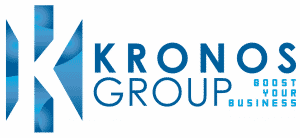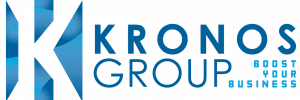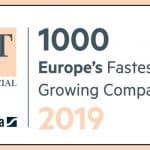How Procure-to-Pay systems mitigate operational risks and boost business capability

Summary
Procure-to-pay is an integrated system that fully relies on the automation of the purchasing process to secure resources for a business. The main aims of a procure-to-pay process are increasing efficiency, financial optimisation, solvency, transparency, visibility, and control. In this blog, we understand how procure-to-pay systems mitigate operational risks and boost business capability and present some tips that can be utilised for long-term operational benefits. There is often confusion between procurement and procure-to-pay. However, there is a vast difference between the functions. The blog also discusses this, alongside the importance of implementing a procure-to-pay system for ensuring business survival and establishing a competitive advantage.
Procure-to-pay is an integrated system that fully relies on the automation of the purchasing process to secure resources for a business’s product or service creation function. The name procure-to-pay comes from the connectivity and integration established to streamline processes—from product purchase up to vendor payment.
The main aims of a procure-to-pay process are increasing efficiency, financial optimisation, solvency, transparency, visibility, and control. Procure-to-pay is also known as P2P, purchase-to-pay, e-procurement, or req-to-cheque.
Using procure-to-pay software provides an efficient method for managing purchases, cash flow, accounts payable, and supplier relationships—and encouraging stakeholder collaboration.
How procure-to-pay systems mitigate operational risks and boost business capability
Business processes are filled with risks that come from volatile market conditions, fierce competition, cascading economic situations, growing consumer needs, and the increased pace of globalisation.
A procure-to-pay system mitigates operational risk and boosts business capabilities by:
- Enabling seamless processes and operations
- Sustaining and improving financial controls
- Reducing errors through automation
- Widening stakeholder bases and improving management
- Offering simple and elegant consumer experiences
- Streamlining processes and prioritising time management
- Prioritising financial control and prompting financial solvency
- Pushing transparency and accountability throughout processes
- Enhancing risk management and approaches towards compliance
- Improving the speed, scalability, usability, and performance of procure-to-pay process
- Building up flexibility and accessibility that caters to global processes, budgeting, and financial diversification
A procure-to-pay system allows businesses to stand out from stakeholders, which derives a competitive advantage for them. Additionally, digitalising the procurement process with procure-to-pay software solutions strengthens compliance and develops control among stakeholders.
Tips to derive long-term operational benefits from procure-to-pay processes
The leading supply chain market constraints are containing cost increases, facing global competition, and adapting to customer expectations. In this environment, operational benefits can be derived through:
- Implementing a procure-to-pay software
The implementation of a procurement system software allows a business to streamline operations, convert process complexities into simplicities, and satisfy all stakeholders.
- Improving process transparency and visibility
Keeping procurement processes transparent and visible will reduce miscommunication and errors, which will increase stakeholder trust and surpass their expectations.
What is the difference between procurement and procure-to-pay?
There is often confusion between procurement and procure to pay. However, there is a vast difference between the functions.
Procurement covers the purchasing of goods or services from suppliers whilst developing a strategy to improve related processes including, resource sourcing, contract management, cost optimisation, quality assurance and stakeholder relationship management.
However, procure-to-pay is the management of purchases, payments, reporting and analysis of the overall supply chain management through an integrated system. This concept is relatively new, however, data has shown that 45.1% of firms see procure-to-pay as a vital component in the management sector.
What are the four stages of the procure-to-pay process?
Procure-to-pay integrates the purchasing accounts and payable systems to stimulate and create efficiencies within processes. The four stages of the procure-to-pay cycle are:
- Procurement
This is when purchase requests outline the resources needed for processes. This includes searching for suppliers to fit business needs in terms of quality, quantity, and finance. During this stage, market research is conducted to ensure suppliers are chosen adequately. During this process, supplier and stakeholder relationships are established to create a reliable and consistent supply chain.
- Purchase
This is the evaluation and selection of resources before the purchase order is issued and finalised. Pre-approved suppliers are evaluated and selected at this stage. Then, the suppliers approve the purchase order. During this process, finances are recorded and systems are updated on the level of cash outflows which will curate the financial liquidity left for other schemes of operation.
- Acquire
This is when resources for goods and services creation are received. Once acquired, they undergo quality assurance. If goods are up to standards, they are recorded in the purchase registry. This helps during the latter stages of operation for making data-backed decisions. With procure-to-pay systems, every transaction is recorded, which is evaluated during stakeholder performance reviews.
- Payment
This is the stage at which invoices are drawn up and approvals are gained. During this process, invoices are reconciled and cross-checked against the initially drawn-up purchase order and receipts. Finally, they are paid off. With digitalisation, a business can achieve better cashflow visibility and better credit terms with suppliers as they enable businesses to better build supplier relationships.
Implement a procure-to-pay system that mitigates risk and boosts business capability
Implementing procure-to-pay systems is a strategic decision taken by businesses—and as such, it is vital to understand the need for digitalisation, trends in automation within your industry, competitor stance, financial feasibility, and economic conditions. These understandings can be brought about by incorporating procurement consulting to guide your business towards set objectives.




